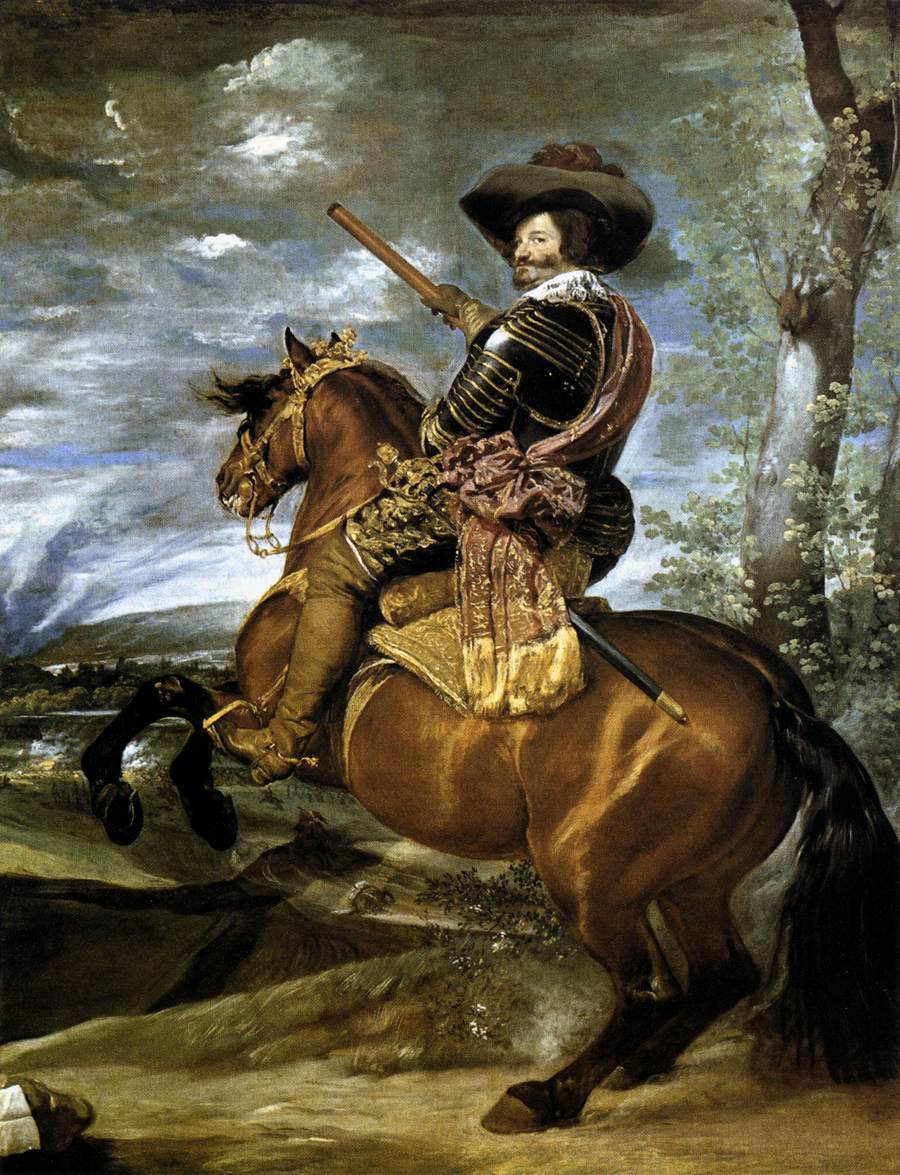Description
"The Count-Duke of Olivares on Horseback" is an iconic painting by Spanish artist Diego Rodríguez De Silva y Velázquez. Oversized at its original dimensions of 314 x 240 cm, this masterpiece stands out for its unique artistic style, masterful composition and use of colour.
Regarding the artistic style, Velázquez was known for his ability to capture reality with great precision and detail. In this painting, we can appreciate his mastery of the chiaroscuro technique, which consists of the contrast between light and shadow to create a sensation of depth and volume. In addition, his loose and flowing brushwork adds a touch of spontaneity and vivacity to the work.
The composition of the painting is impressive. The Count-Duke of Olivares, a powerful politician and military man of the 17th century Spanish court, is mounted on a majestic white horse. Velázquez manages to convey a sense of power and authority through the upright and resolute posture of the main character. The horse, with its fixed gaze and its tail held high, adds dynamism and energy to the scene.
As for color, Velázquez used a palette of earthy and dark tones, mainly highlighting red and gold in the Count-Duke's clothing. These warm, vibrant colors contrast against the dark, neutral background, creating a striking visual effect and drawing attention to the protagonist.
The story behind this painting is fascinating. The Count-Duke of Olivares was an influential figure in the Spanish court during the reign of Felipe IV. Velázquez, who was the official court painter, was commissioned to portray the Count-Duke in this work. The painting was created in 1634 and is believed to have been exhibited in the Salón de los Reinos of the Buen Retiro Palace in Madrid.
A little known aspect about this painting is that Velázquez included several symbolic elements in the work. For example, the Count-Duke's white horse represents purity and nobility, while the sword he carries in his right hand symbolizes his military power. Furthermore, the presence of a dog in the lower left part of the painting can be interpreted as a symbol of loyalty and fidelity.
In conclusion, "The Count-Duke of Olivares on Horseback" is a masterpiece that stands out for its artistic style, masterful composition, and use of color. This painting not only portrays an important historical figure, but also conveys a sense of power and authority through its visual representation.

